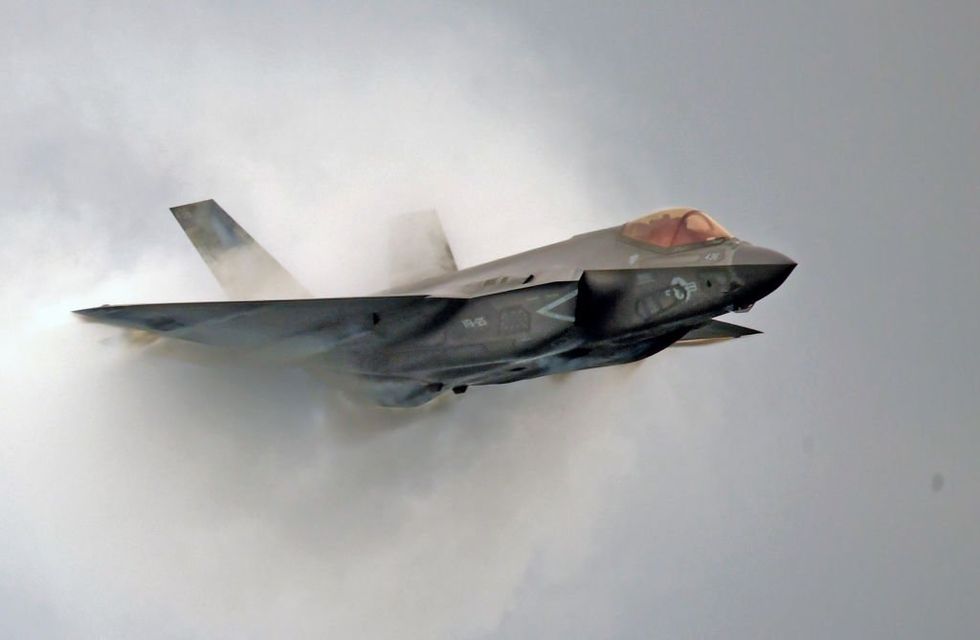Shape-shifting nanotech and flying robots: The future of the US Air Force

Aerospace technology is advancing at mind-blowing speed with the advent of advanced artificial intelligence. AI has expanded the possibilities that previously limited the defense industry. Now, the aerospace industry is moving to utilize physics in mind-blowing ways.
Here are some of the latest aerospace and defense industry developments that have been revealed to the public.
This tech is clearly still in the development or testing phase, but the fact that researchers are seriously discussing a nanotech material that can ‘shape-shift’ is incredible.
Let’s start with one of the most bizarre examples. The Samarai UAV project produced a small UAV
described as “the world’s first controllable robotic samara monocopter.” This aircraft mimics the samara — the tree seed with a “wing” like a helicopter — in its design. The Samarai copter is about 16 inches long and weighs less than a pound. It can take off and land on the ground or be thrown into the air for takeoff. It also has a mounted camera, which revolves at the same speed as the machine’s rotation, allowing for a stable camera view on the controller — which is a tablet.
This design has a lot of promise for the future: “Because its design is so robust and efficient, the Samarai is intended mainly for military surveillance and reconnaissance missions. It is capable of carrying and dropping small payloads, and can be inexpensively fabricated using a 3D printer.”
Another example is Lockheed Martin’s F-35 Lightning II, which is at the cutting edge of military stealth fighter jets. Northrop Grumman
describes it as a “stealthy, supersonic, multirole fighter” designed for the modern needs of the military.
Earlier this year, NASA debuted Lockheed Martin’s X-59 Quesst. The “X”
signifies that it is part of the Low Boom Flight Demonstration research. The X-59 Quesst was a project that sought to “quiet the boom,” referring to the sonic boom produced when the aircraft’s speed exceeds the speed of sound. Robert Pearce, NASA’s associate administrator for Aeronautics, said the research “showed us it was possible to design an aircraft that would produce a soft bump instead of a sonic boom.” The result of the research was the X-59, which is the prototype of what could become an industry of supersonic commercial aircraft. This aircraft’s sound is more like that of a car door closing than a typical sonic boom.
NASA is also developing
Revolutionary Vertical Lift Technology, which is revolutionizing how traditional helicopters are used. These aircraft are capable of taking off, landing, and hovering in place anywhere they need to be. This project “is working with partners in government, industry, and academia to develop critical technologies that enable revolutionary new air travel options, especially those associated with Advanced Air Mobility such as large cargo-carrying vehicles and passenger-carrying air taxis.”
The RVLT project was historically concerned with “traditional rotary wing vehicles,” but it is also supporting the
Advanced Air Vehicles Program. This is a broader project with diverse focuses on new technologies in aerospace development. While many of these projects are still in the developing stages, they show the great breadth of the directions that the researchers are taking new aerospace technologies.
There are also alleged murmurings of nanotechnology that would drastically change the aerospace field forever. According to a piece of an
interview with some Lockheed Martin researchers, the tech developers discovered some new nanotechnology applications. These same researchers described the Samarai UAV project, as discussed above.
This other technology, however, has some truly mind-bending capabilities. One of the researchers said, “New materials that are on the lab bench right now … they can literally change shape, they can become almost a muscular material.” They also said that the material could take on different functions, like information processing or power storage: “We can do things like embed the nanotubes to make conductive structure, so that information doesn’t flow through a wire next to the structure but literally flows through the structure.”
They went on to discuss the possibilities of these futuristic aircraft, describing the ways in which “swarms” of “adaptive vehicles” could interact with each other to complete different tasks under changing conditions. The idea is that smaller vehicles could learn from each other and interact with larger aircraft. Some may have sensors, while others have other capabilities like payload transport or defense.
This type of UAV fleet would forever change air and space travel and the battlefield. As the researcher says, “As we go forward, we’re going to find new ways of using these unmanned UAVs.” This tech is clearly still in the development or testing phase, but the fact that researchers are seriously discussing a nanotech material that can “shape-shift” is incredible.





